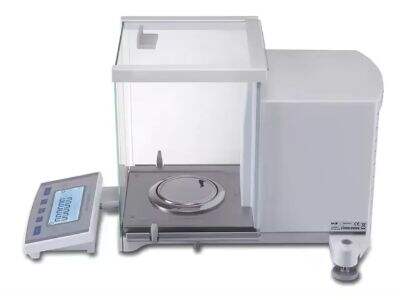وبالتالي، عندما يستخدم العلماء أو الكيميائيون موازين إلكترونية لوزن المواد الكيميائية أو المكونات، من المهم جدًا التأكد من أن الميزان يوفر نتائج دقيقة. وهنا تأتي أهمية عملية المعايرة.
ما هو الت headibration؟
المعايرة تشبه الفحص الدوري للميزان الذي يتيح التأكد من أن كل شيء بحالة جيدة وجاهز للعمل. تمامًا كما تزور الطبيب لإجراء فحص دوري، إلكتروني التوازن تتطلب الموازين معايرات متكررة للتأكد من أنها لا تزال في حالة تشغيل جيدة. عندما لا يتم معايرة الميزان، فقد يقدم قراءات خاطئة، مما قد يؤدي إلى أخطاء كبيرة في التجارب والوصفات على حد سواء.
إرشادات لمعايرة الميزان الإلكتروني.
قد يبدو أن معايرة الميزان الإلكتروني مهمة كبيرة، لكنها ليست معقدة بالتفاصيل. لذا إليك دليلًا خطوة بخطوة لمعايرة ميزانك من AIK إلكتروني التوازن الدقة :
الخطوة الأولى هي التأكد من نظافة الميزان. فقد تؤثر الأتربة أو الأوساخ على دقة أدائه.
شغّل الميزان واتركه يسخن لبضع دقائق.
انتقل إلى خيار المعايرة في القائمة. وقد يُسمى هذا الخيار حسب نوع الميزان "cal" أو "zero".
ضع وزنًا معروف القيمة على الميزان. يجب أن يكون هذا الوزن مساويًا لسعة الميزان. استخدم وزنًا يعادل أقصى وزن يمكن للميزان قياسه، على سبيل المثال، استخدم وزنًا بقيمة 500 جرام إذا كان الميزان يقيس كحد أقصى 500 جرام.
اضغط على زر المعايرة واترك الميزان يكمل عملية المعايرة؛ فقد يعرض رسالة "تمت المعايرة" عند الانتهاء.
ضع وزن المعايرة أولًا، ثم ارفعه وتأكد من قراءة الميزان.
راقب نصائح الميزان الإلكتروني للحفاظ على دقة ميزانك الإلكتروني
الشيء الأول الذي يجب أن تضعه في اعتبارك بشأن جهاز AIK الخاص بك إلكتروني التوازن للتأكد من أنه يمنحك نتائج دقيقة هو أن تقوم بمعايرة الجهاز بشكل صحيح دائمًا.
تحقق من الميزان بشكل متكرر لضمان عدم تأثير الأتربة أو الانسكابات على دقته.
تجنب وضع الميزان في أماكن تتسم بدرجات حرارة أو رطوبة شديدة، لأن ذلك قد يؤثر على دقته.
لا تضع أي أشياء ثقيلة على الميزان عند عدم استخدامه، حيث قد يؤثر ذلك على معايرته.
قم بإعادة المعايرة بشكل متكرر، خاصة إذا لاحظت قراءات غريبة أو أخطاء.
الأخطاء التي يجب تجنبها أثناء معايرة الميزان الإلكتروني
على الرغم من أن معايرة الميزان الإلكتروني أمر بسيط نسبيًا، إلا أن هناك بعض الأخطاء الشائعة التي يجب الانتباه إليها:
إذا استخدمت وزن معايرة خاطئ فقد تحصل على نتائج خاطئة. تأكد من استخدام الوزن المناسب لقدرة وزن الميزان الخاص بك.
تخطي وقت التسخين. يضمن تسخين الميزان استعداده للحصول على قياسات دقيقة.
معايرة الميزان دون تنظيفه. إذا كان هناك تلوث بالغبار أو الأوساخ، فلن تتمكن المعايرة من العمل بشكل صحيح.
تجاهل رسائل الخطأ. لا تقلل من أهمية ظهور خطأ على الميزان أثناء عملية المعايرة. قم بالتحقيق في السبب أولاً، ثم تابع العملية.
لماذا تعتبر الت headibration مهمة
إذا اتبعت هذه النصائح وقمت بمعايرة ميزانك الإلكتروني من AIK بانتظام، يمكنك التأكد من أن قياساتك تكون دائمًا صحيحة. وهذا يمنحك الثقة في تجاربك أو وصفاتك، مع الحصول على المعلومات الصحيحة في كل مرة. قد لا تبدو المعايرة أمرًا كبيرًا، لكنها تُحدث فرقًا كبيرًا لضمان دقة وموثوقية ميزانك الإلكتروني. لذلك، لا تنسَ إجراء فحص دوري لميزانك للتأكد من أنه في حالة جيدة.












































